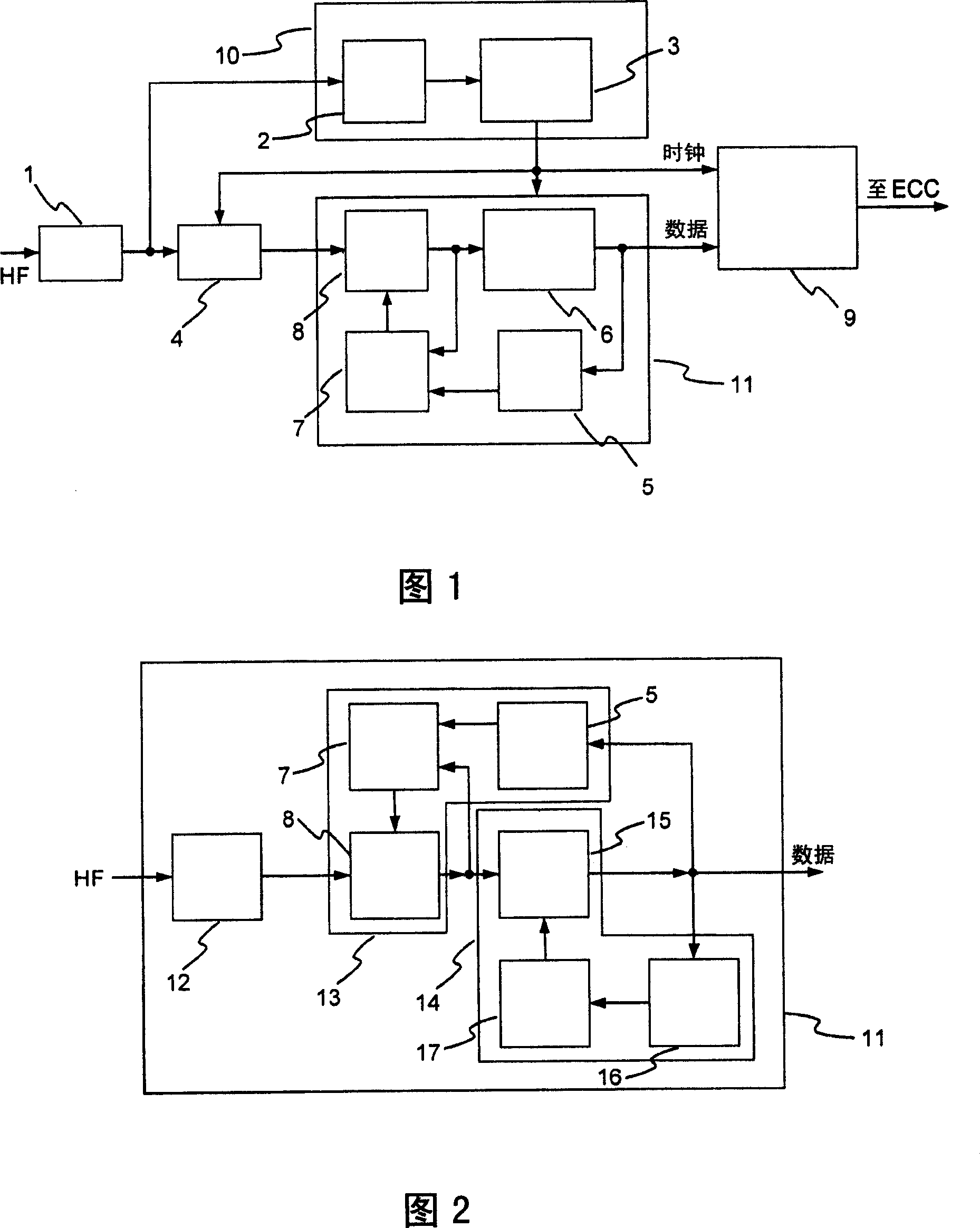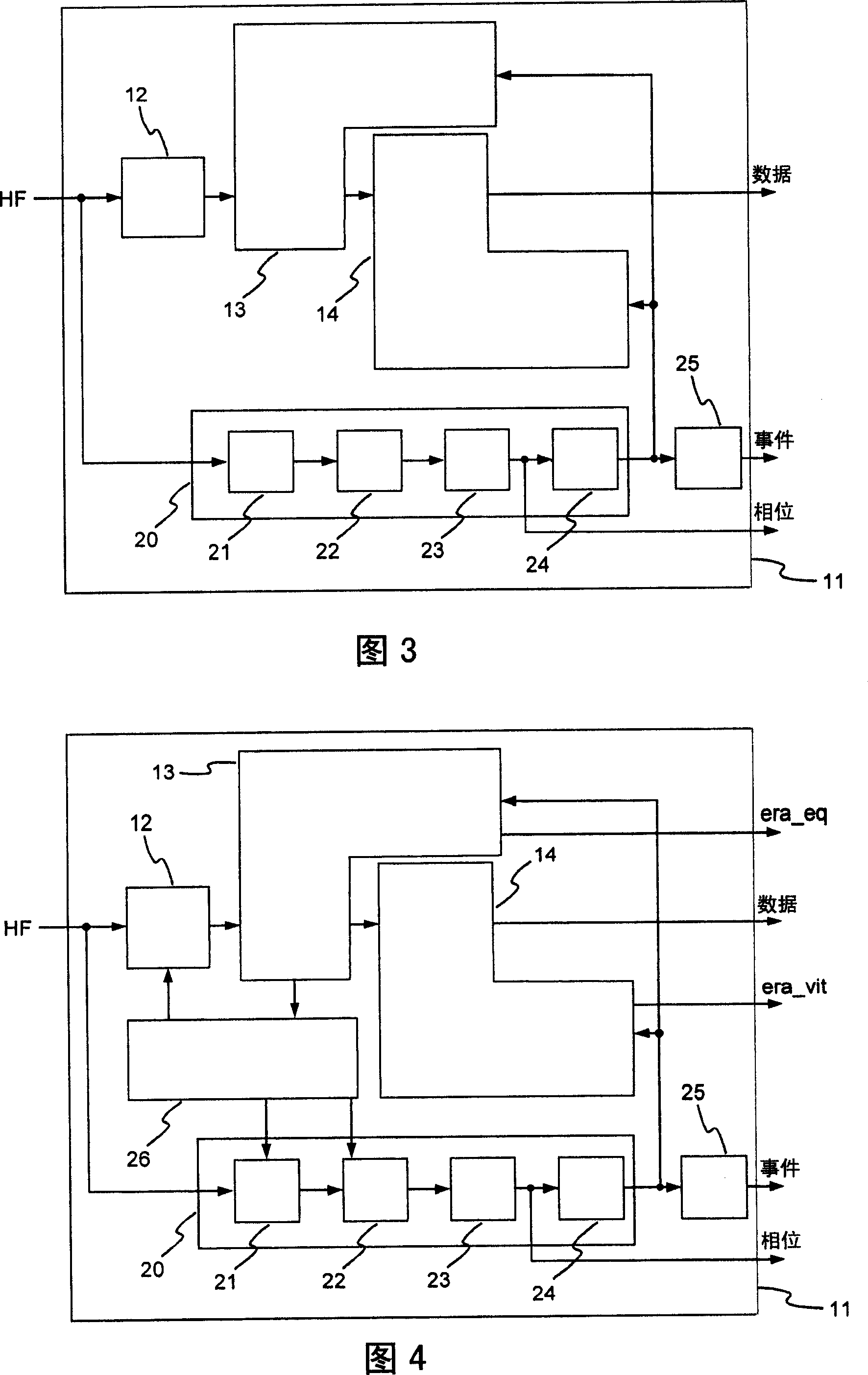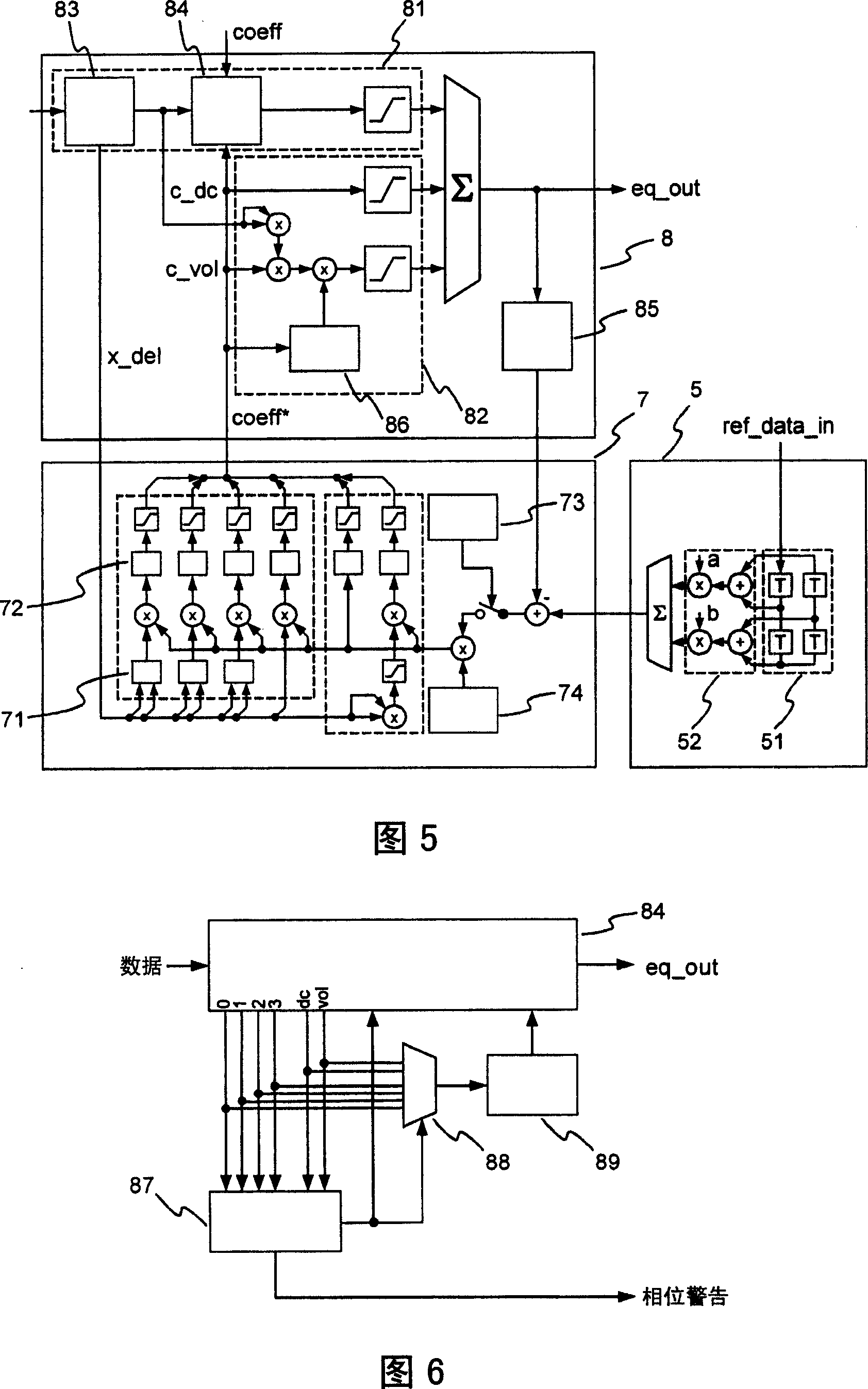Arrangment for adaptive bit recovery
An adaptive and self-adaptive equalization technology, applied in recording/reproducing/deleting methods, digital recording, information storage, etc., can solve problems such as unstable self-adaptive process
- Summary
- Abstract
- Description
- Claims
- Application Information
AI Technical Summary
Problems solved by technology
Method used
Image
Examples
Embodiment approach
[0037] C new =C old +μ·∑(tfout-eqout*)·x (3)
[0038] Basically, the filtered feedback ref_data_n of the recovered data is compared with the equalizer output eq_out, weighted by an adaptive constant MU at the equalizer input x_del, and combined in a set of accumulators 72 . To reduce the number of filter coefficients, some quality degradation is accepted by employing symmetric filters. This in turn allows for simplified calculations. For this purpose, an averager 71 is provided. The feedback filter (target filter) 5 is a linear FIR filter comprising a delay unit 51 and a MAC unit 52 and follows the local response estimation of the considered data channel. Typically, this filter 5 is defined by declaring (symmetric) filter coefficients PR(abba). For example, it is common for DVD (Digital Versatile Disc) PR (1111) and BD (Blu-ray Disc) PR (1221).
[0039] In order to match the coefficients, the equalizer output eq_out and the X vector, ie the equalizer input, are delayed b...
example 1
[0070] PR(1221), data sequence 1110→1×(+1)+2×(+1)+2×(+1)+1×(-1)=+4 Therefore, the most likely next state of this conversion is state '4'.
example 2
[0072] PR(1221), data input 120, 120, 120, 100, assumes the first three bits have been detected, and specifies to scale the partial response sequence output to the range +128 to -128.
[0073] target value:
[0074] Unscaled: -6 -4 -2 0 +2 +4 +6
[0075] Scaled: -102 -68 -34 0 +34 +68 +102
[0076] Path 5: 120×(102)+120×(102)+120×(102)+100×(68)
[0077] Path 6: 120×(102)+120×(102)+120×(102)+100×(102)
[0078] The next state value is given by the minimum path value added to the current state value. Thus, for state '5', two paths are possible, etc. The state with the smallest value is the most likely next state. Therefore, the decoder only needs to know this state to discern the most probable bit.
[0079] Returning to FIG. 8, since the path storage and surviving control unit 153 needs to store paths, each path has an ID. Since only four different path decisions are required in the Trellis graph, binary number storage is sufficient for each desired choice. Therefore, the...
PUM
 Login to View More
Login to View More Abstract
Description
Claims
Application Information
 Login to View More
Login to View More - R&D
- Intellectual Property
- Life Sciences
- Materials
- Tech Scout
- Unparalleled Data Quality
- Higher Quality Content
- 60% Fewer Hallucinations
Browse by: Latest US Patents, China's latest patents, Technical Efficacy Thesaurus, Application Domain, Technology Topic, Popular Technical Reports.
© 2025 PatSnap. All rights reserved.Legal|Privacy policy|Modern Slavery Act Transparency Statement|Sitemap|About US| Contact US: help@patsnap.com



